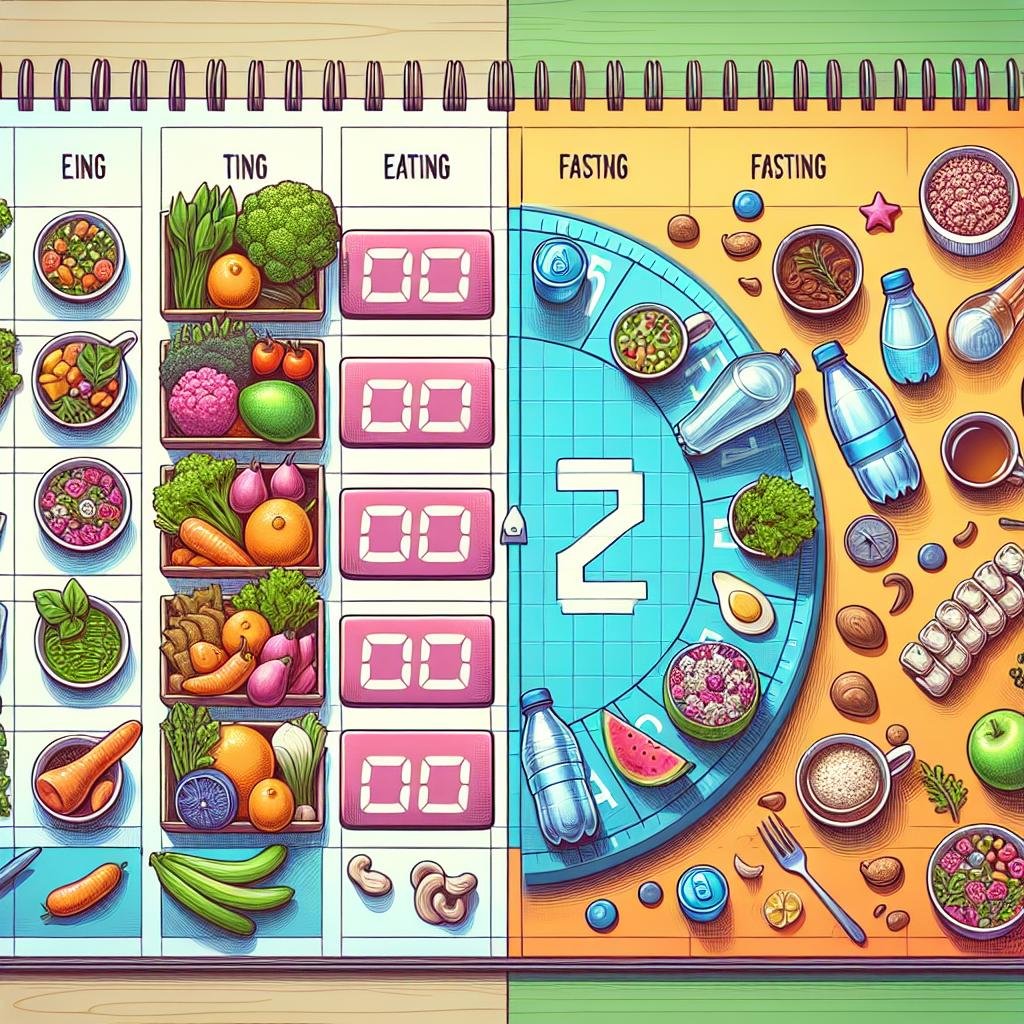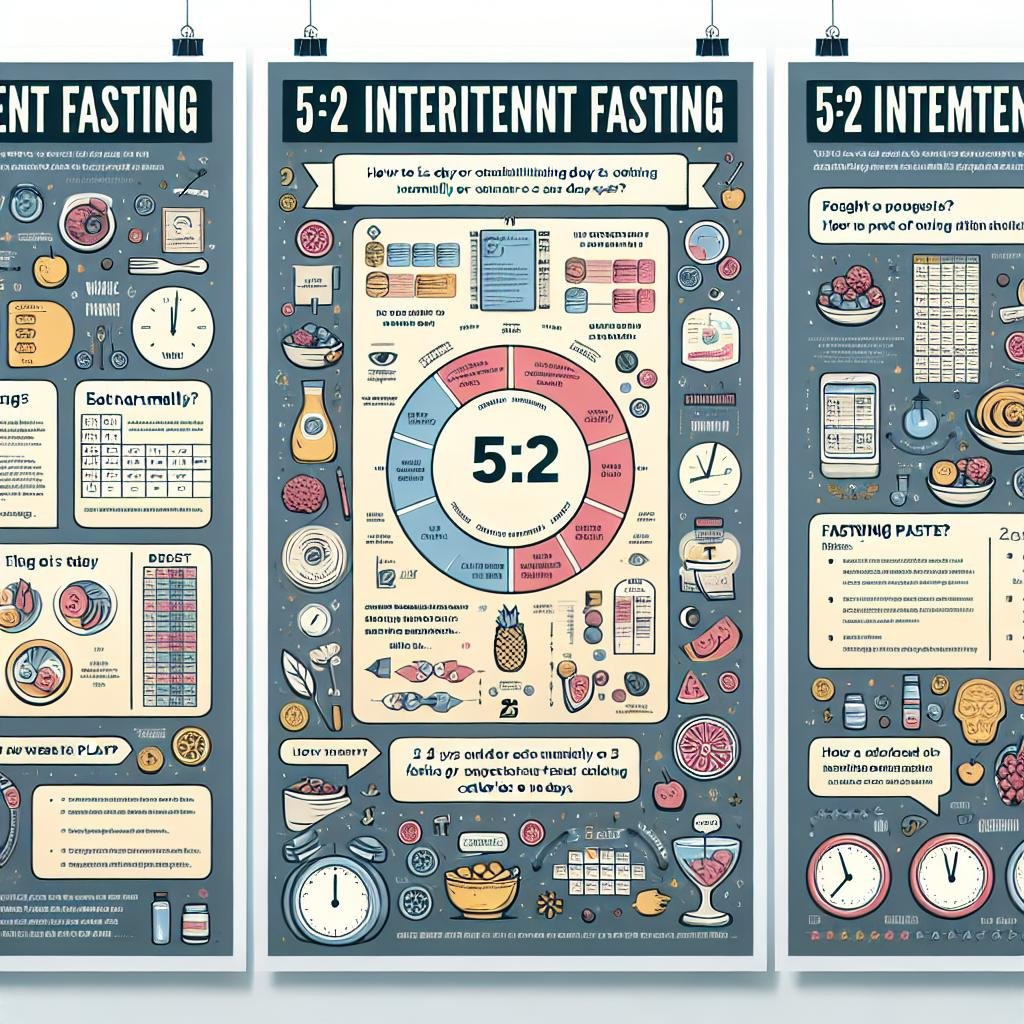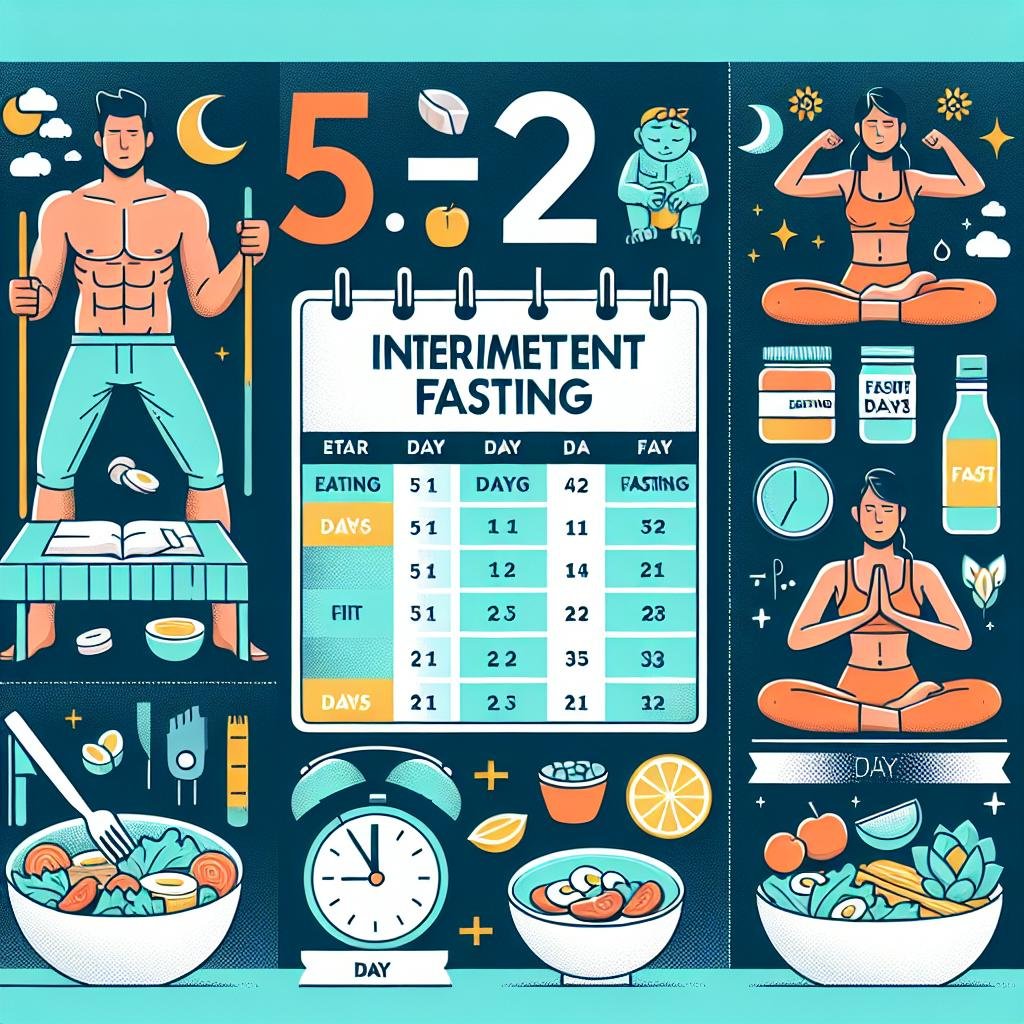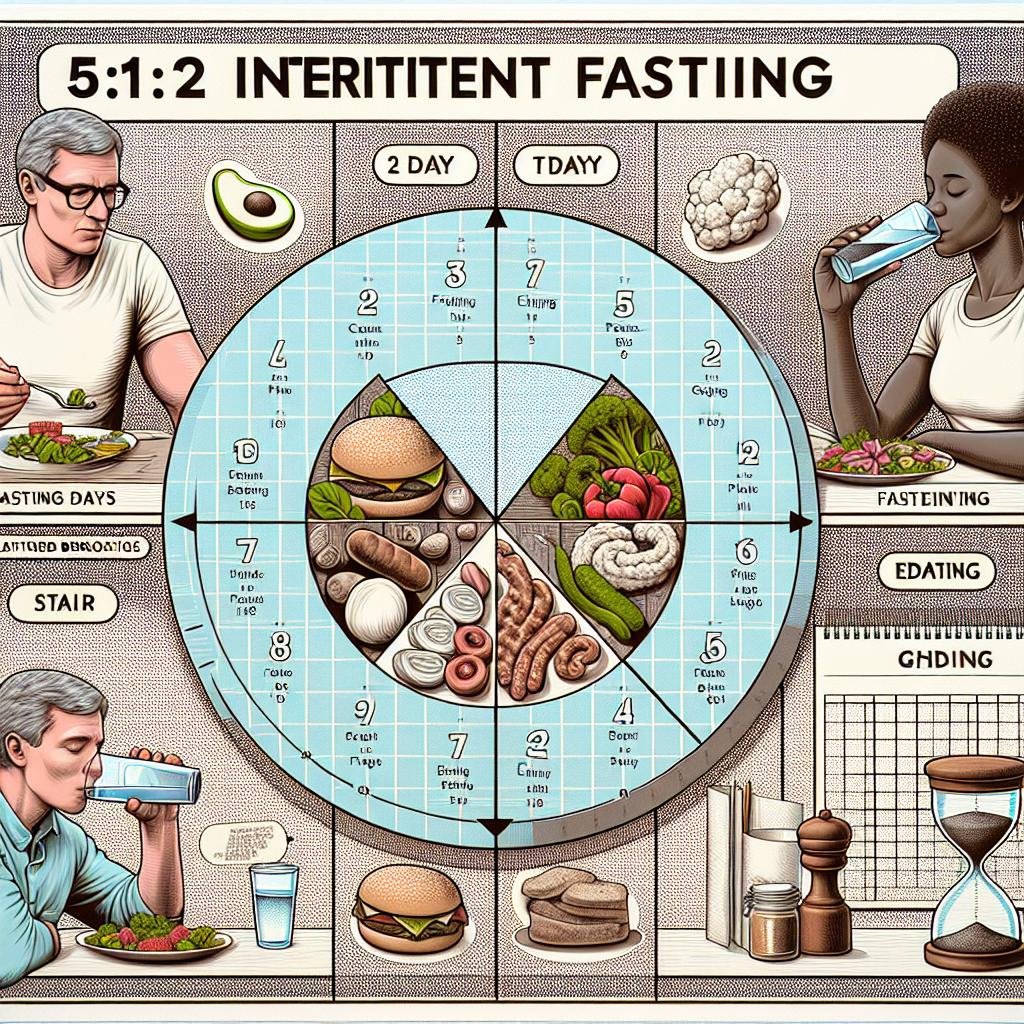An In-Depth Look at the 5:2 Intermittent Fasting Method
In a world where health trends flicker like the latest social media updates, intermittent fasting has emerged as a beacon of dietary exploration, capturing the attention of fitness enthusiasts and casual dieters alike. Among the various approaches to this intriguing eating regimen, the 5:2 method stands out as a fascinating blend of simplicity and flexibility. Imagine eating normally for five days of the week while strategically reducing calorie intake for just two. This seemingly paradoxical promise of indulgence paired with restraint has drawn many into its orbit, sparking curiosity about its potential health benefits and practical applications. In this article, we’ll navigate the principles and science behind the 5:2 fasting method, offering an in-depth examination of its effects on the body, mind, and lifestyle. Whether you’re a seasoned intermittent faster or contemplating your first foray into this dietary landscape, join us as we unravel the threads of one of the most popular fasting styles, exploring both its promise and its pitfalls.
Understanding the Principles Behind 5:2 Intermittent Fasting
The 5:2 intermittent fasting method is built on the fundamental principle of caloric restriction during designated periods, allowing individuals to enjoy the benefits of fasting without the rigidity of daily calorie limitations. On fasting days, participants typically consume about 500–600 calories, while resuming normal eating on the remaining five days. This unique approach encourages the body to utilize stored fat for energy while promoting metabolic benefits such as improved insulin sensitivity and decreased inflammation. It’s essential to adopt a strategy that includes nutrient-dense foods on fasting days, focusing on a balance of proteins, healthy fats, and fiber to enhance satiety and maintain energy levels throughout the day.
Psychologically, the flexibility of the 5:2 method can make it easier to adhere to than traditional diets. By allowing normal eating during the week, it fosters a sustainable relationship with food and reduces the feelings of deprivation associated with typical weight-loss programs. The key components include:
- Self-regulation: Gaining control over food intake without feeling constantly restricted.
- Health Focus: Prioritizing nutrient quality over quantity on fasting days.
- Community Support: Engaging with others on similar journeys can provide motivation and accountability.

Exploring the Health Benefits and Risks of the 5:2 Method
The 5:2 method of intermittent fasting, where individuals eat normally for five days and significantly limit their caloric intake (around 500-600 calories) for two non-consecutive days, has garnered attention for its potential health benefits. Among the notable advantages, this approach may assist with weight loss, improve metabolic health, and support brain function. Research has suggested that intermittent fasting can enhance insulin sensitivity, leading to better blood sugar control, which is particularly beneficial for those at risk of type 2 diabetes. Additionally, the fasting days may promote autophagy, a cellular cleanup process that can reduce the risk of certain chronic diseases.
However, it’s important to consider potential risks associated with this method. Some individuals may experience side effects on fasting days, including fatigue, irritability, and difficulty concentrating. Moreover, there is a risk of overeating on non-fasting days, potentially negating caloric deficits achieved through fasting. Individuals with certain health conditions, such as eating disorders or diabetes, should consult with a healthcare professional before beginning the 5:2 diet. Below is a concise overview of the benefits and risks:
| Health Benefits | Potential Risks |
|---|---|
| Weight loss support | Fatigue and irritability |
| Improved metabolic health | Potential for overeating |
| Better blood sugar control | Concerns for specific health conditions |
| Enhanced brain function | Difficulty concentrating |

Crafting a Balanced Meal Plan for Fasting Days
When it comes to , it is essential to focus on nutrient-dense foods that can sustain energy levels, enhance satiety, and prevent the onset of hunger. Prioritize meals that provide a harmonious blend of complex carbohydrates, healthy fats, and lean proteins. This combination not only supports metabolic functions but also helps maintain muscle mass during periods of caloric restriction. Consider the following food choices:
- Vegetables: Leafy greens, broccoli, and bell peppers
- Fruits: Berries, apples, and oranges
- Whole grains: Quinoa, brown rice, and oats
- Proteins: Grilled chicken, tofu, and legumes
- Healthy fats: Avocado, nuts, and olive oil
To simplify meal planning, you can create a weekly outline that emphasizes variety while keeping your caloric intake in check. Below is a sample table that outlines a balanced meal structure for a single fasting day:
| Meal | Food Items | Estimated Calories |
|---|---|---|
| Breakfast | Overnight oats with berries | 200 |
| Lunch | Mixed vegetable salad with chickpeas | 300 |
| Dinner | Grilled salmon with quinoa and broccoli | 400 |
| Snacks | Apple slices with almond butter | 200 |

Tips for Success and Sustainability in Intermittent Fasting
To thrive while practicing the 5:2 intermittent fasting method, it’s essential to establish a balanced routine that promotes both success and sustainability. Hydration plays a vital role in managing hunger and maintaining energy levels. Consider drinking plenty of water, herbal teas, and black coffee during fasting days to stay hydrated without consuming calories. Additionally, meal planning can set you up for success. By preparing your meals in advance, you are less likely to reach for unhealthy options on your non-fasting days. Prioritize incorporating whole foods, lean proteins, and plenty of vegetables to ensure that your body receives adequate nutrition.
Social support can significantly enhance your journey, so consider joining a community of fellow intermittent fasters. Engaging with others allows you to share tips, experiences, and motivation. Furthermore, it’s essential to listen to your body—adjust your fasting schedule if you feel overly fatigued or uncomfortable. Ensuring a good night’s sleep is also crucial; aim for 7–9 hours of restorative sleep to help your body recover and optimize the benefits of fasting. Here’s a simple table highlighting some nutrient-dense foods to include on your non-fasting days:
| Food Group | Recommended Foods |
|---|---|
| Proteins | Chicken, Fish, Eggs, Lentils |
| Vegetables | Spinach, Broccoli, Kale, Bell Peppers |
| Healthy Fats | Avocado, Nuts, Olive Oil, Seeds |
| Whole Grains | Quinoa, Brown Rice, Oats, Whole Wheat Bread |
To Conclude
As we conclude our exploration of the 5:2 intermittent fasting method, it’s clear that this approach presents not just a dietary shift, but an opportunity for a mindful relationship with food. Intermittent fasting invites us to reconsider our eating patterns, encouraging reflection on what we consume and how we nourish our bodies. While the science points to a host of potential benefits, from weight management to improved metabolic health, personal experiences will vary. Whether you decide to embrace this method or simply glean insights from its principles, the journey toward understanding your body’s needs is invaluable. In a world often overshadowed by quick fixes and fleeting trends, the 5:2 method stands out as a thoughtful strategy that emphasizes balance. So, as you ponder your next steps, remember: your path to wellness is uniquely your own, and every choice you make is a step towards a healthier future.

